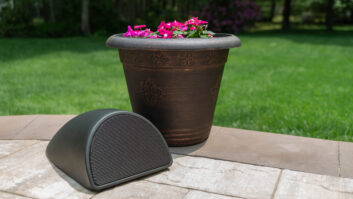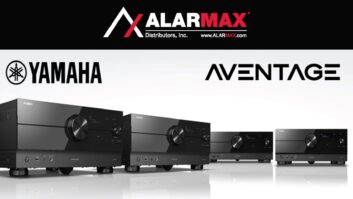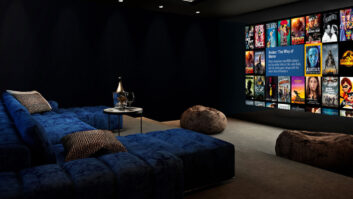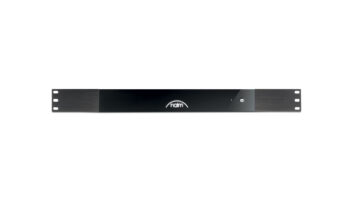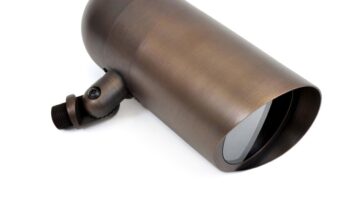Kudos: A beautiful, space-saving design that packs a ton of features; app looks and (more importantly) works great, offering nice customization; integrates with Yamaha’s entire MusicCast ecosystem; CI’s will love the web setup
Concerns: External USB drive handling could be better
Any time you talk about whole-house music distribution these days, it seems like you must start by addressing the 800-pound gorilla in the room: Sonos. Love ‘em or hate ‘em, Sonos has a lock on the majority of the wireless market, especially in the consumer space, with systems now installed in over seven million homes. I mean, they advertised during the Super Bowl for heaven’s sake. The. Super. Bowl!
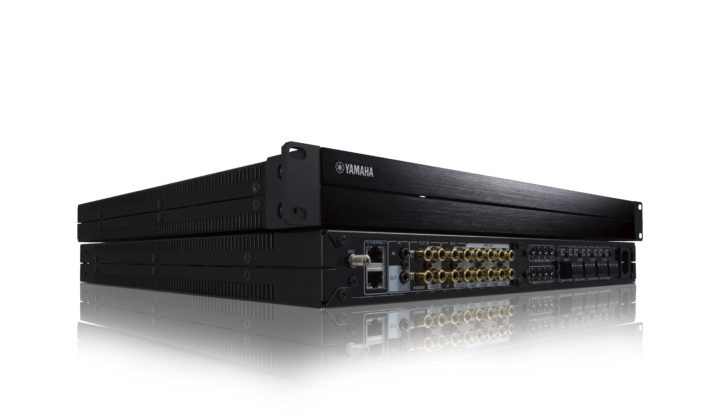
Fortunately, instead of just rolling over to the Sonos juggernaut, several companies have decided to take them head-on, giving integrators a lot of options to choose from. Besides the audio distribution solutions provided by our automation partners like Control4, Crestron, Savant, and URC, we have HEOS from the D&M group, and Bluesound from Lenbrook International. Play-Fi has been embraced by multiple companies, while others have embraced Google’s Chromecast.
Another major player in this space is Yamaha with its MusicCast ecosystem of products. Yamaha initially launched MusicCAST way back in the early 2000s, but it was a bit ahead of its time and had difficulty gaining market traction. They tried again with MusicCAST2 in 2009, but still couldn’t crack the market. Rather than ditching it, Yamaha engineering continued development and then brought the system to market in a big — and yet stealthy — way in 2015 when they decided to start including MusicCast technology in all of their AVRs. This launched a Trojan Horse of wireless audio capability into people’s homes whether they wanted it or not, and offered a pathway for MusicCast to grow.
Over the past four years, Yamaha has launched over 70 MusicCast-capable products, but none have been specifically built to address the needs of the CI channel…until now, with the debut of the XDA-QS5400RKBL.
According to Yamaha, the new QS5400 has been “specifically designed for custom integration of whole-home audio systems.” That tagline alone was enough for me to reach out to Yamaha to bring in a review sample.
While my company, Custom Theater and Audio, has been a Yamaha dealer for over 10 years, my personal experience with MusicCast up till this review was about nil. In a way, this is good, as I went in as our customers would; knowing little about the product or app, and just wanting to enjoy music around my home.
Review: Roon Labs Nucleus Music Server
The QS5400 has a few main talking points that include it packing four independent zones of streaming (QS = “Quad Streamer”) and amplification into an ultra-slim, 1U high, rack mountable chassis. The system can be expanded to 32 zones, with simultaneous playback in linked groups up to 20 zones. The QS has been designed for audiophile performance, featuring 8 channels of ICEpower Class D amplification, producing 100-watts/channel (4 ohms) and bridgeable to 200 watts/channel (8 ohms), and utilizing ESS Sabre DACs supporting high-res playback up to 192 kHz/24-bit. It also offers some cool and unique integration features such as a Web setup menu to quickly configure, backup, and restore a system.
My home is wired for five rooms of audio and has seen many different audio distribution systems over the years, so I noticed a couple of things about the QS5400 right off the bat. First, in the past 6×6 seemed to be the audio distribution scheme of choice (ELAN System6, Niles ZR-6 and GXR2, Russound CA66, SpeakerCraft MZC-66, etc.), and the QS5400’s 4-zone could leave legacy installs a couple of rooms short, as it did in my install. (Sorry pool speakers!) Fortunately, Yamaha makes it easy to expand as needed. For single rooms there’s the WXA-50. Or you could just add another QS5400. The second thing I noticed was how deep the system is. At just under 18 inches deep (without any wire connected), it could push the depth boundaries if installed in a cabinet. (Wiring poked ever-so-slightly out the back of my Salamander.) This likely won’t be a concern if rack-mounting, but something to keep in mind.
Connection-wise the QS5400 is mostly straight-forward with a couple of nice surprises. You get Phoenix-style connectors for four sets of speakers, smartly designed with negatives in the middle to reduce shorting risks (though limited to 16-gauge wire). You have variable RCA pre-outs and 3.5mm 12v triggers for each zone, along with RCA Aux in and out to connect a legacy source. There are two Ethernet connections, allowing you to use the QS5400 as a single-source switch, say, for linking network signals to another chassis. Likely unnecessary in a rack install, but a nice feature. It also comes with a nice faceplate that creates a clean, finished look, and discourages any button poking.
On the surprise front there is an RCA Cut-In input allowing a temporary signal (like an announcement from a connected mic) to override any playing music, a feature that could be hugely beneficial in commercial installs. There are also four chime inputs, with 20 selectable internal chime sounds, letting the QS5400 easily become your whole-home doorbell system. (Sorry, there is currently no provisions for loading your own audio file.)
One feature you’ll either love or hate are the four USB inputs on the front panel. On the one hand, I love the convenience being able to easily pop in a drive without having to bother with accessing the rear. On the other, well, two things. One, installing a drive requires removing the faceplate, which really mars the elegant look with the drive(s) now sticking out the front. Second, these drives aren’t shared across zones; i.e., zone 1’s USB drive is only browsable and directly accessible by zone 1. Fortunately, USB content from any zone is playable in any other zone when they are linked, but I would have preferred a single front and rear USB connection that was simultaneously accessible to all zones.
The browser setup is another real nod to the needs of the custom market, letting you quickly make the majority of configuration settings across all four zones. Also, kudos to Yamaha for including a well-written manual with the system that gives a nice walkthrough of each feature and setting. The web setup is broken into four tabs: General, Basic, Audio, and Others.
General gives you a snapshot of each zone in the system, check/update firmware, set zone names, see IP and MAC addresses for each zone, and set static IPs if desired. Basic give access to adjusting trims for each amp channel and pre-out, as well as independently for every input and streaming service. Here you also assign which chimes are active in which zones, as well as which of the 20 chime sounds is used, and the volume, and adjust Cut-In settings. Audio lets you tweak low/mid/high signals ±6 dB (in .5 dB steps), access the compressed music enhancement and bass extension features, set a mono downmix, and set a turn-on and max volume limit for each zone. Finally, Others lets you perform a factory reset, set AirPlay passwords, and backup or restore a zone.
With these features, you could zip through a full system setup in no time. The only key things not offered via the web setup are the ability to enter credentials for streaming services and hiding unused services. Fortunately, these options are all easily available via the MusicCast app, as are most of the other adjustments.
Speaking of the app, I found it to be very intuitive, sleek looking, and easy to use. One simple thing I loved was the ability to replace a room’s stock photo with an actual photo of the client’s room, which truly speaks to custom. Another great feature was the volume up fade control, which prevents you from accidentally jacking the volume way higher than intended. The app also initiates Amazon Alexa setup, edits music queues, saves playlists, links zones together, etc. There is even a nice TIPS section that owners can refer back to (without calling you!) in case they forget something.
One of the major differentiators between MusicCast and other systems is the deep integration with Yamaha’s family of MusicCast-enabled AVRs and soundbars, giving users the ability to access/listen to any external sources connected to any AVR. This “any” includes HDMI, digital, phono, and even Bluetooth. The system automatically downmixes multi-channel content down to 2-channel for MusicCast zones, giving users access to all of their content in every room, with no additional wiring required. That’s cool.
The QS5400 natively supports Pandora, Spotify Connect, SiriusXM, SiriusXM Music for Business (commercial-grade streaming), Internet Radio, Tidal, Deezer, and Napster. Apple iOS users can also use AirPlay to beam non-supported services such as Amazon and Apple Music. Content can also be streamed across the network in MP3, WMA, AAC, and ALAC in resolutions up to 96/24, and WAV, FLAC, or AIFF up to 192/24.
Being built for the CI channel, the QS5400 offers support for major automation platforms, including Control4, RTI, ELAN, URC Total Control 2.0, and Fibaro. (Crestron certification is in the works.) The QS5400 announced itself via SDDP to my Control4 system and the integration went smooth as silk. The only aspect of the C4 integration that wasn’t perfect was the inability to hide unused sources, however, Yamaha says this feature is on the radar for addressing.
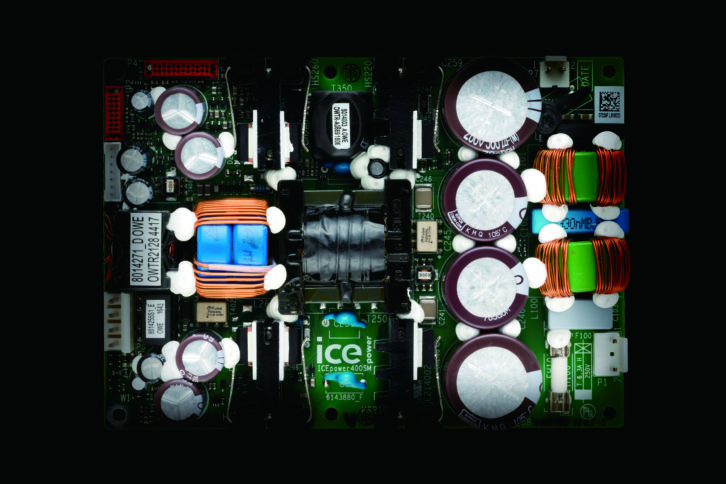
I’ve long been a fan of ICEpower digital amplification, finding it one of the best Class-D amp technologies available, and nothing about the QS5400’s performance changed my mind here. It had plenty of gas when called on to drive rooms to loud levels, and had the power to produce some real bass from my Origin Acoustics D104 10-inch in-ceiling speakers. And, as the name implies, the streamer never grew warm to the touch even after hours of play.
Yamaha’s XDA-QS5400RKBL isn’t really a revolutionary product, but one that offers refinements and functionality designed specifically for the demands of the custom channel. It makes installing and configuring a whole-house music system a snap, with an app that customers won’t fumble to learn. Further, it offers significantly better pricing margins than the 800-pound gorilla! For Yamaha dealers already selling MusicCast-enabled AVRs, this makes the perfect addition to the line-up.
———————————–
714-522-9105 / USA.YAMAHA.COM/PRODUCTS/AUDIO_VISUAL
Product Specs:
- 8-channel Class D ICEpower amplification; 100 watts (4 ohms)/50 watts (8 ohms); bridgeable to 200 watts/channel (8 ohm)
- Streams four zones of audio, expandable to 32 zones with simultaneous playback in linked groups up to 20 zones
- Built-in Pandora, Spotify Connect, SiriusXM, SiriusXM Music for Business, Internet Radio, Tidal, Deezer, Napster, and Apple AirPlay
- Supports streamed network audio files in MP3, WMA, AAC, ALAC (up to 96/24), WAV, FLAC, and AIFF (up to 192/24)
- Third-party support for Control4, RTI, ELAN, URC, and Fibaro (Crestron certification coming); Amazon Alexa integration
- Connections: Inputs: (2) RCA stereo analog audio (Cut-in, AUX), (4) USB (front panel, 1 per zone); 3.5mm Remote In, (4) 3.5mm Chime in; Ethernet network connection; Outputs: (4) RCA stereo analog audio pre-out, (2) RCA audio through out (Cut-in, AUX), (4) 3.5 mm 12 VDC triggers, Ethernet network connection; power supply
Dimensions:
- Tabletop mount with feet and faceplate: 1.75 x 17.25 x 17.875 inches (HxWxD); Weight 13.9 pounds
- Rackmount with faceplate: 1.75 x 18.875 x 17.825 inches (HxWxD); Weight 13.9 pounds

